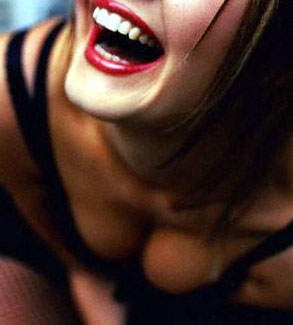Everyone knows of it, and more or less everyone is drawn there on a visit to Paris. Yes, of course, it’s a tourist trap, and a cliché and much too obvious to be “cool.” It’s as silly and vain as it is enormous and awesome — but we are talking about the very model of a modern erection, and which of those (even the mightiest) has escaped a trace of self-mockery or the hint of imminent deflation? Thrust up as it is, almost 1,000 feet, an intricate fretwork of iron posed on great masonry piers, it is and was a tribute to French engineering and industrial progress as well as a reminder of the most ancient valor of the hard-on, so enormous that the symbolism may be beyond our grasp. Until we go there.
Again, it is obvious — yet a necessary statement of amazing vision — that the tower, the tower of Gustave Eiffel, is there so that we may all behold the wonder and extent of Paris. But it’s only when you’re there, wandering the open square made by its four piers, that you understand the tremendous boyish pose of the tower, the way the two platform stages permit the angle of the four upreaching corners to vary so that you have the feeling of some tense, showoff gymnastic splaying. If the four corners were regular, this tower would be prim and self-righteous; the perceived curve of the metal (an illusion artfully achieved) is so human, so cocksure, so boastful, it makes the brown iron feel warm and supple, like muscle.
Well, there are crowds. On a Sunday set to reach the high 80s, I ventured there with family and thousands of others. The lines waiting for the elevators were immense, sluggish and bitter. So we elected to join the far shorter line of those who would climb the Eiffel Tower (as far as the second stage, anyway). If you can possibly manage it, this is the way to savor the view, just as it is the most respectful approach to Eiffel’s great trick. More than that, it leads you — as if providentially guided — to the sexual secret of this paean to erection in the new age. You get the Eyeful Tower.
Think of it as a healthy model for capitalist labor and endeavor: You must go up first, before you are able to come down into the promised land. It’s a climb, and would be even on a chilly day. I paused at a few of the modest landings to read the rather old-fashioned informational posters — on how Lindbergh had used the tower to guide himself in to Paris; how in August 1944 a resistance fighter had climbed up all the way with a French flag and had replaced the swastika; how, in the early ’50s, Princess Margaret Rose of Great Britain had visited the tower. And so on.
You reach the second stage. You drink water. You stroll around the platform, noting the different views. And then, suitably rested, you descend.
It is the charm of this modern tower that a single staircase carries people up and down. So, as you descend, there is a steady line of people passing you. Everyone keeps to the right. I was happy with the sunny Sunday and the views, and amused by the very dogged way in which a little French girl behind me was counting the steps out loud. There was comedy in the way that the prolonged numbering of the French language (une mille, trois cent, quatre-vingt trois) was too much of a mouthful for one step. But then, flight after flight, I saw, I felt, I registered a rare and lovely contra-rhythm: For at every step, a pair of breasts came up toward me.
No, not every step, of course. But this was warm June, with many pilgrims to Eiffel’s glory being young women in halter tops or merely gestural T-shirts — that is, scraps of cloth so flimsy or transparent that only because it is worn above the waist do you realize it might be a T-shirt — of whom I had a very nice vertically superior view. I will say nothing of the morality of this unexpected treat. But neither am I the kind of idiot who would try to walk down the Eiffel Tower with my eyes shut just to avoid a modest unfair advantage. Let’s just say that the vision appeared naturally (the hillocks, the croissants, the pigeons, the shelves) and made me all the more appreciative of Gustave Eiffel’s mathematical genius. Two for every one on a fine June day does equal well-being. And the Eiffel Tower is something you must not miss.

